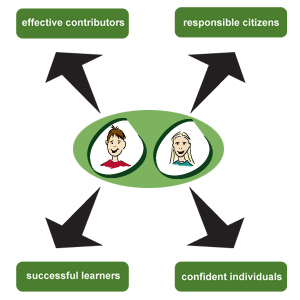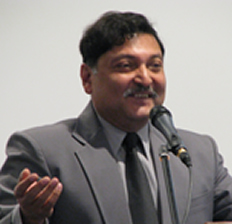

Glow Scotland blog
Meall Greigh, Scottish Highlands
The Scottish Highlands is an historic region of Scotland. It has been culturally distinguishable from the Scottish Lowlands from the later Middle Ages into the Modern period, when English replaced Scottish Gaelic throughout most of the Lowlands. The term is also used for the area north and west of the Highland Boundary Fault, although the exact boundaries are not clearly defined, particularly to the east. The Great Glen divides the Grampian Mountains to the southeast from the Northwest Highlands. The Scottish Gaelic name of A’ Ghàidhealtachd literally means ‘the place of the Gaels’ and traditionally, from a Gaelic-speaking point of view, includes both the Western Isles and the Highlands.
The area is generally sparsely populated, with many mountain ranges dominating the region, and includes the highest mountain in the British Isles, Ben Nevis. Before the 19th century the Highlands was home to a much larger population, but due to a combination of factors including the outlawing of the traditional Highland way of life following the Jacobite Rising of 1745, the infamous Highland Clearances, and mass migration to urban areas during the Industrial Revolution, the area is now one of the most sparsely populated in Europe.
Image by Gerri Tait/Text Wikipedia
More On St Andrew’s Day this year the First Minister Alex Salmond will be attending an event at Linlithgow Academy and Glow is going to be joining him by live video stream from 11.30 -12.20pm.
On St Andrew’s Day this year the First Minister Alex Salmond will be attending an event at Linlithgow Academy and Glow is going to be joining him by live video stream from 11.30 -12.20pm.
Whilst there he will be hearing all about the Role Model Project and talking to Patrick Gaffney about the project.
Role Model Project is focused around questioning how young people measure success, what is having a successful life, what is success, is fame a necessary part of success etc. This helps raise confidence and aspirations as youngsters realise they too can succeed in a wide variety of ways. The focus very much will be on what is a successful Scot.
Live at the event will be around 60-80 pupils, mostly senior school but with representatives of the debating society and Fair Trade group, who are younger, mixed in. You are also able to have your questions answered by the First Minister on the day. Post them on our discussion board in the Homecoming Group.
Please remember this isn’t a Glow Meet as it is being live streamed but your questions will be submitted beforehand and asked live on the day.
Sign up and let us know that you are going to watch and post your questions for the First Minister.
****** DUE TO SEVERE WEATHER CONDITIONS THIS EVENT HAS BEEN CANCELLED ****
More This week in Glowing Thursdays we will be joined by Angela Edwards, formally of HMIe and is now Head of Planning and Culture in Inverclyde.
This week in Glowing Thursdays we will be joined by Angela Edwards, formally of HMIe and is now Head of Planning and Culture in Inverclyde.
Angela has in-depth knowledge of special schools and units arising from her experience as a teacher, depute and headteacher. In her role as HMIe she has been able to gain a national perspective and has also been able to consider the opportunities and challenges facing the sector as they implement CfE.
This Glow Meet will focus on meeting the needs of children and young people within the framework for learning and teaching with particular emphasis on broad general education, coherence and progression. Angela will consider the key messages and this will be followed by an opportunity for questions and discussion.
Sign up on the Glowing Thursdays page and join us from 4-5pm on Thursday 25th November.
MoreWe bring you this second opportunity live from Manchester as Professor Sugata Mitra addresses this year’s Microsoft Innovative Education Forum.
 Professor Mitra will be addressing the delegates in Manchester, which will be available live via Glow Meet on Tuesday 30 November. The keynote will be streamed live between 15.10 and 1600. Sign up here to catch this inspirational speaker.
Professor Mitra will be addressing the delegates in Manchester, which will be available live via Glow Meet on Tuesday 30 November. The keynote will be streamed live between 15.10 and 1600. Sign up here to catch this inspirational speaker.
Professor Mitra is Professor of Educational Technology at the School of Education, Communication and Language Sciences at Newcastle University, UK. He is the instigator of the Hole in the Wall experiment, where a computer was embedded within a wall in an Indian slum at Kalkaji, Delhi and children were allowed to freely use it. The experiment aimed at proving that kids could be taught computers very easily without any formal training. His keynote will explore the concept of ‘Self organising systems in education.’ His premise is that groups of children, given the appropriate resources, can learn to use computers and the Internet on their own, achieve many objectives of schooling on their own, and even attain levels of achievement close to traditional schooling with the help of a friendly, but not necessarily knowledgeable, mediator.
Professor Mitra’s ideas about learning as a self organising system are based on experimental results, often referred to as ‘the hole in the wall’ experiments. He will be discussing this famous project and more recent research.
He will include his thoughts on the design of facilities and technology for areas where good schools cannot exist and good teachers do not want to go.
This keynote hints at a future of education that may be very different from what we have today.
The Hole in the Wall experiment has left a mark on popular culture. Indian diplomat Vikas Swarup read about Mitra’s experiment and was inspired to write his debut novel that went on to become the Oscar winning movie of 2009 - Slumdog Millionaire.
MoreTakingITGlobal is an online community of young people interested in global issues and creating Global change. This CPDMeet gives Scottish teachers the chance to hear from one of the organisations founders, Michael Furdyk, as he addresses the audience at this year’s Microsoft Innovative Educator Forum in Manchester.
Their vision is to enable a collaborative learning community which provides youth with access to global opportunities, cross-cultural connections and meaningful participation in decision-making. Read more about Michael here.
Join us from 9.40 - 10.35 on Tuesday 30 November to join in this great CPD opportunity. Sign-up is here.
MoreLoch Tay and Ben Lawyers
Ben Lawers is one of the highest mountains in the southern part of the Scottish Highlands. It lies to the north side of Loch Tay, and is the highest point of a long ridge that includes seven Munros. Ben Lawers was long thought to be over 4,000 ft in height; accurate measurement in the 1870s showed it to be some 17 ft short of this figure. In 1878, a group of twenty men spent a day building a large cairn in the hope of bringing the summit above the “magic” figure. The cairn is no longer there; in any case the Ordnance Survey ignored it as an artificial structure that was not truly part of the hill.
Most of the south side of the Ben Lawers range has since 1950 been owned by the National Trust for Scotland. The Trust owns a visitor centre located at the western end of the range, from where a much-eroded path leads to the summit. The visitors centre had an exhibition that explained the geological formation of the mountain, but unfortunately closed in 2010. The nature trail does however survive. A slightly different path also leads from the centre, heading for the summit by way of the intermediate peak of Beinn Ghlas.
Ben Lawers is designated as a National Nature Reserve due to the abundance of rare alpine plants. It is regarded by botanists as one of the richest areas for alpine fauna in the UK, this is due to the schist rocks of the mountain which are situated at the correct altitude for the plants. Some of the plants found on Lawers include Alpine Forget-me-not, roseroot, Net-leaved Willow and most of the Saxifrages. The mountain is also of interest to zoologists, some of the bird species include ravens, ring ouzels, red grouse, ptarmigan, dippers and curlews. Other rare species include the Viviparous lizard and the Wildcat.
Image by www.SuperStock.com/Text Wikipedia
More
On the final day of State of Emergency, S2 year groups from all seven schools came together via Glow Meet to share their learning experiences from this intensive week of activity.
Tarbert Academy journalists gave a live report on the conflict as news broke in the west of Scotland. Their broadcast was interrupted when freedom fighters broke into the newsroom in protest against the government regime.
A Bathgate Academy human rights campaigner gave a powerful speech about the importance of integrity and trust.
During the week, Lochend Secondary pupils had explored war poetry in English and code breaking in Maths. In Drama they’d made a film about a boy who wanted to join the army and in PE they’d learned what it might feel like to be in the army as they were made to run outside in the cold!
Clyde Valley High had a visit from the Red Cross and found out about refugee camps; they created Facebook pages and video messages for viral communications; they made images of war by acting out and photographing scenes involving rebels, civilians and government soldiers.
The Army marched into Cumnock Academy hall and set up an assault course – the highlight of the week for the reporters:
“It was amazing, great fun – I didn’t come first but I did enjoy it!”
“It helped build my confidence”.
They also had visits from the Red Cross and a Human Rights lawyer and learned that everyone has rights to equality and protection. Pupils had purified water in Science, and designed and built devices to transport black market goods through underground tunnels in Technology and Art.

At Greenock Academy aid workers had training in basic first aid and learned to cook nutritious meals with limited supplies. The army launched a search for a missing soldier and through constructing a refugee camp, they learned team work, how to filter water, make up ration packs and distribute food to refugees.
Holy Cross High reported that propaganda was rife, with posters put up around the school by both factions; normal lines of communications had been destroyed. The Department of PE had transformed soldiers into ‘lean, mean fighting machines’ in Sniper Alley; the Department of Technology investigated ways of disposing of human waste; the Department of Social Studies researched the causes of conflict, whilst the Department of Drama explored the motivations of those involved.
State of Emergency has clearly been an amazing experience for both pupils and staff. I would encourage you to visit the Glow Group to read pupil diaries about their learning, look at more photographs of cross-curricular activities and see the rich variety of resources shared by participating teachers. This really has been Curriculum for Excellence in action.
Co-Create is funded through a partnership between Learning and Teaching Scotland and the Creative Scotland National Lottery Fund.
Image credit: Kath Morley, Greenock Academy
MoreThis project is so rich that it is impossible to fully reflect the depth and breadth of the activities and learning taking place in seven secondary schools across Scotland.
Today I went out to visit Cumnock Academy in East Ayrshire where staff have embraced the project and as well as designing an exciting timetable of activities for S2, have created opportunities for other pupils, such as the higher media studies students who are recording and reporting on the week’s activities, and the S6 pupils who are helping S2 build emergency shelters.
I arrived in time to join pupils in the hall to watch the fourth and final webisode. They were totally engaged and focused as the drama reached its sad and shocking conclusion. The atmosphere was palpable as pupils silently started to take in and make sense of what they’d seen.
The online dramas have provided the stimulus for the week’s activities and have generated deep discussion and raised big questions. Some of the pupils later engaged in a conversation with a group at Tarbert Academy via Glow Meet and had a serious debate about the motives behind different characters’ actions. Would they have stolen food if they were freedom fighters? Did they think being an insurgent would put their family in danger?
Yesterday, a Human Rights Lawyer visited the school as an expert witness. He was surprised by the pupils’ depth of knowledge, their insight into conflict situations and the challenging nature of their questions.
Participants have explored the physical, ethical and political issues and challenges thrown up by conflict and they have seen the relevance and connectivity of learning across the curriculum. The project has provided a stimulus for learning and a platform for creative response. The impact of State of Emergency looks set to be long lasting.
Co-Create is funded through a partnership between Learning and Teaching Scotland and the Creative Scotland National Lottery Fund.
Image credit: Eoghann MacColl, Cumnock Academy
More Glow blogs are an exciting and flexible tool for schools. Glow blogs provide an ideal platform for users to record evidence of learning by creating a reflective journal or e-portfolio in their ‘My Glow’ area.
Glow blogs are an exciting and flexible tool for schools. Glow blogs provide an ideal platform for users to record evidence of learning by creating a reflective journal or e-portfolio in their ‘My Glow’ area.
A Glow e-portfolio is a fantastic tool for highlighting a pupil’s progression, allowing young people to continually reflect on progress as their portfolio grows. E-portfolios provide pupils with the opportunity to discuss their development with teachers and parents and set targets for the next stages in learning.
Created in a learner’s “My Glow” area, a Glow e-portfolio can be taken with pupils throughout their school life and exported to a personal blog when pupils leave school.
The national Glow team are supporting schools in the creation of individual pupil blogs. Open to all Glow users, a National E-portfolio Glow Group has been created providing discussion areas, blog templates, instructions on how to use the templates and links to examples of Glow blogs being used as e-portfolios.
For more information or support from the national Glow team, visit the Glow help blog, or alternatively email Glow Admin.
More
“This is an act of peace not war”, the politician announces in a TV news broadcast as government troops are mobilised for Operation Democracy – “the aim, to disable the unelected regime and restore democracy”. The reality for State of Emergency narrator Chloe is chilling – she is able to watch military strikes online whilst her own building shakes.
So began day three of State of Emergency, an intensive week for S2 pupils in seven schools, exploring the dilemmas and complexities of war, supported by Visible Fictions Theatre Company, and using a project Glow Group to share information, ideas and resources.
At Greenock Academy, staff and pupils have been living out a conflict, using role play to explore issues faced by refugees, soldiers, journalists and politicians.
“We don’t belong anywhere and we can’t trust anyone. We don’t want to fight, we just want to go home.” S2 ‘Refugee’ Pupil to Journalists, Greenock Academy
Clyde Valley High mathematics pupils were faced with the challenge of constructing new bridges to transport supplies over the Clyde after a bombing raid had destroyed the existing ones. They also learned how to make and break codes.
With the threat of shortages caused by the conflict, home economics pupils investigated what food supplies would be needed and where to locate them. At Bathgate Academy, the dining staff are involved too – their State of Emergency lunch time menu includes a ‘No deliveries’ day, with store cupboard ingredients only, and ‘No power or cooking facilities’ day when only cold food will be available.
“Its exciting, really different from normal school” S2 Pupil, Clyde Valley High
“We could have done a whole month on this”. Teacher, Lochend Secondary
Co-Create is funded through a partnership between Learning and Teaching Scotland and the Creative Scotland National Lottery Fund.
Image credit: Julie Austin, Lochend Secondary
More
Find us on